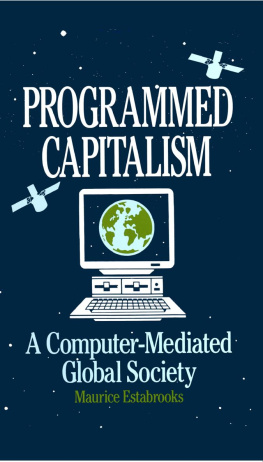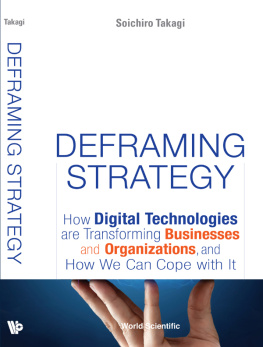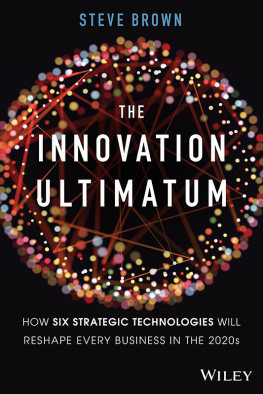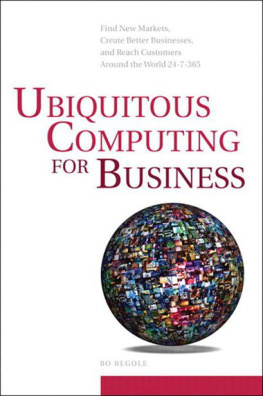Cover
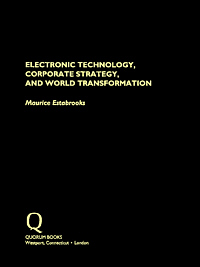
| title | : | Electronic Technology, Corporate Strategy, and World Transformation |
| author | : | Estabrooks, Maurice. |
| publisher | : | Greenwood Publishing Group |
| isbn10 | asin | : | 0899309690 |
| print isbn13 | : | 9780899309699 |
| ebook isbn13 | : | 9780313008504 |
| language | : | English |
| subject | Information technology--Economic aspects, Technologie de l'information--Aspect economique, Information technology--Management, Technologie de l'information--Gestion, Computer networks, Ordinateurs, Reseaux d', Information networks, Information, Rese |
| publication date | : | 1995 |
| lcc | : | HC79.I55E85 1995eb |
| ddc | : | 658.4/038 |
| subject | : | Information technology--Economic aspects, Technologie de l'information--Aspect economique, Information technology--Management, Technologie de l'information--Gestion, Computer networks, Ordinateurs, Reseaux d', Information networks, Information, Rese |
Page i
ELECTRONIC TECHNOLOGY, CORPORATE STRATEGY, AND WORLD TRANSFORMATION
Page ii
This page intentionally left blank.
Page iii
ELECTRONIC TECHNOLOGY, CORPORATE STRATEGY, AND WORLD TRANSFORMATION
Maurice Estabrooks

QUORUM BOOKS
Westport, Connecticut London
Page iv
Library of Congress Cataloging-in-Publication Data
Estabrooks, Maurice.
Electronic technology, corporate strategy, and world
transformation/Maurice Estabrooks.
p. cm.
Includes bibliographical references (p. ) and index.
ISBN 0-89930-969-0 (alk. paper)
1. Information technologyEconomic aspects. 2. Information
technologyManagement. 3. Computer networks. 4. Information
networks. 5. Business enterprisesCommunication systems.
6. Strategic planning. I. Title.
HC79.I55E85 1995
658.4'038dc20 9439336
British Library Cataloguing in Publication Data is available.
Copyright 1995 by Maurice Estabrooks
All rights reserved. No portion of this book may be
reproduced, by any process or technique, without the
express written consent of the publisher.
Library of Congress Catalog Card Number: 9439336
ISBN: 0-89930-969-0
First published in 1995
Quorum Books, 88 Post Road West, Westport, CT 06881
An imprint of Greenwood Publishing Group, Inc.
Printed in the United States of America

The paper used in this book complies with the
Permanent Paper Standard issued by the National
Information Standards Organization (Z39.481984).
10 9 8 7 6 5 4 3 2
Page v
In memory of Lottie Muriel Estabrooks
Page vi
This page intentionally left blank.
Page vii
Contents
Preface | ix |
| Technology, Corporate Strategy, Public Policy, and the Transformation of the World | |
| The Role of Electronic Technology in the Creation of the Advanced Industrial Society | |
| The Microchip and the Computer: Technological Underpinnings of the Postindustrial Society | |
| Growth, Expansion, Convergence, and Creative Destruction | |
| Network Universe | |
| The Intelligent Infrastructure | |
| The Intelligent Economy | |
| Restructuring, Transforming, and Globalizing Organizations, Markets, and Economic Systems | |
| War of the Worlds | |
| Into the Millennium | |
Selected Bibliography | |
Index | |
Page viii
This page intentionally left blank.
Page ix
Preface
The subject of electronic superhighways has been the focus of intense media attention in recent years because of the dramatic impacts these are expected to have on people, businesses, and the structure and organization of economic society. The truth is that electronic technology, electronic communications, and electronic networks have played a profound role in the development of an advanced industrial society especially in the postwar period. In fact, they transformed it into an information and communications society. This book provides a sociotechnical and economic history of this transformation with specific emphasis on the microchip and computer and telecommunications revolutions as viewed from the Schumpeterian process of creative destruction. That is, it focuses on those dynamic mechanisms and behavioral elements of capitalist systems that result in the creation of new production processes, new products and services, new markets and new organizational forms and how it destroys others. It advances the premise that these are not ordinary technologies in any sense of the word. To appreciate their true significance, these technologies must be seen as generic and fundamental to the way businesses, the economy, and our society are structured and organized, and the way they operate.
Microelectronics and computer and telecommunications technologies are truly transformative in the sense that they are capable of being applied universally to all manner and variety of business and economic and social activity.
Page x
They are contributing in this way to a transformation of the basic technological underpinnings of economic society, and, through these, they are initiating a profound transformation of the socioeconomic and institutional foundations of the society.
The principal thesis is that corporations and individuals all over the world, acting as designers and developers and as users of hardware, software, and systems are pushing the entire envelope of technologieswhich encompasses everything from microchips, computers and optical fiber, satellite and wireless communications systems to software, workgroup, and multimedia technologies and roboticsalong an evolutionary course and making them converge and coalesce into a single intelligent technology. This technology is differentiated from those of the past by its powerful, automatic, information-processing, communications and artificial intelligence capabilities. It is these multifunctional attributes which give these technologies, in combination, their universal application to every kind of business activity and throughout society.
Viewed from a Schumpeterian perspective, all manufacturers and suppliers of software and service and business users are engaged in a process of creative destruction on a grand scale to engineer, integrate, and synthesize all of the these technologies into a new kind of infrastructure that has the capabilities to mediate, either directly or indirectly, all business and economic activity. They are creating a radically new intelligent, knowledge-based infrastructure to mediate the design, development, and production of all products, equipment, and machinery, the trading and exchange of all goods and services, as well as the all-important information-processing, communications, and decision-making activities that are so integral to the way organizations, economic systems, and society operate and are structured.
Next page

